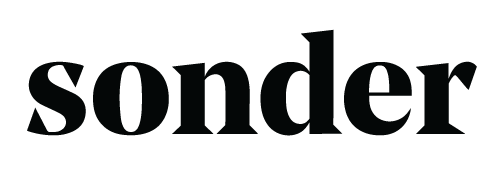
KANGAROO LEATHER
As I’m sure you’ve noticed by now, most of Sonder Leather’s products are made from vegetable-tanned kangaroo leather. To many, this might seem like a bit of a dicey choice at first — given Australia’s fondness for its bouncy marsupials — but there’s sound reasoning behind the decision.
Kangaroo leather has a unique combination of properties that make it one of the world’s most highly sought-after (and valuable) leathers.
STRENGTH
Kangaroo leather is, weight for weight, the strongest leather on Earth. This incredible strength is largely due to the kangaroo’s harsh natural environment, which results in highly uniform collagen fibre bundles within the hide. Additionally, kangaroo skin lacks sweat glands and arrector pili muscles, which means there are fewer weak points for stress to concentrate.
What this means for you is that the leather used to make your Sonder Leather wallet has up to 10 times the tensile strength and tear resistance of traditional cow leather. This, combined with meticulous craftsmanship, is why we confidently guarantee it for life.
SUSTAINABILITY
Kangaroos are an incredibly abundant species, with the current population sitting at around 25 million. In fact, in many areas, overpopulation is reducing habitat quality for other native species.

High kangaroo densities diminish vegetation cover, making smaller animals more vulnerable to predation by foxes and cats. Sadly, many of the species affected are among Australia’s most endangered, including the Eastern Barred Bandicoot.
This little bloke doesn't get along well with kangaroos, or foxes.
To address this, four species of kangaroo are harvested under strict management plans approved by the Australian government. Harvest quotas are adjusted annually to ensure the population remains healthy — if the population decreases, so does the quota.
Thanks to extensive research and planning by the CSIRO and the Australian government, kangaroo leather is considered one of the most sustainable leathers in the world.
VEGETABLE-TANNED
There’s more than one road to Timbuktu, and more than one way to tan leather. The two main methods are chrome tanning and vegetable tanning.

Chrome tanning is a fast, automated process that can produce leather in as little as 24 hours. It’s inexpensive and often used for low-cost, fast-fashion items destined for landfill. Because the chromium salts penetrate the hide so aggressively, the leather’s internal structure is broken down — resulting in a thinner, softer leather that is prone to cracking and disintegration over time.
A chrome-tanning facility in Kanpur, India.

Vegetable tanning, by contrast, is a traditional method that uses natural tannins extracted from tree bark. This process can take up to a month, and as a result, vegetable-tanned leather is typically about twice the price of chrome-tanned leather.
Traditional vegetable tanning at the Böle Tannery in Sweden.
What makes vegetable-tanned leather truly valuable is its ability to develop a rich patina over time. With use, your Sonder Leather wallet will darken and grow deeper in tone — becoming uniquely yours. No two wallets will age the same. And that signature “leather smell” everyone loves? That’s the scent of vegetable-tanned leather — earthy and sweet. Chrome-tanned leather, on the other hand, tends to smell like chemicals.
Scuffs and scratches on chrome-tanned leather usually stick around. But on vegetable-tanned leather, many marks can be buffed out with ease.
For us, vegetable-tanned leather is a no-brainer — it aligns perfectly with our commitment to timeless craftsmanship. And we hope that’s something you’ll come to value too.



